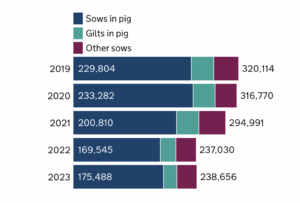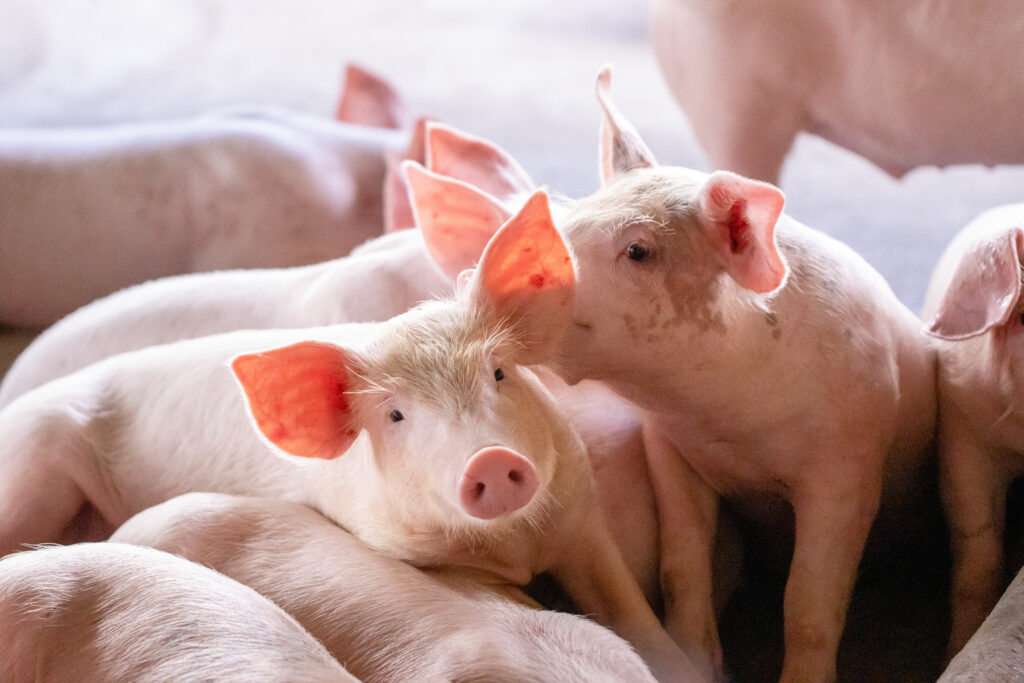The English pig herd declined by 10% last year, while breeding herd stabilised but showed a worrying drop in young pig numbers, Defra’s December census for England shows.
The total number of pigs in England fell to 3.3 million in December 2023, representing a loss of nearly 400,000 pigs. The 10% year-on-year decline was driven by an 11% fall in the number of fattening pigs which account for 91% of all pigs, to just over 3m.
The overall English pig breeding herd was 1% down on December 2022 at 300,800. The female breeding herd, which accounts for 79% of breeding pigs, saw a small increase of 0.7% from 237,000 in December 2022 to 239,000 in December 2023. This followed a dramatic 20% contraction in 2022, as a result of the pig crisis, which followed a 7% contraction on 2021.

This increase was driven by a 3.5% rise in the number of sows in pig to 175,500 and a 0.7% rise in the number of ‘other sows’, those being suckled or dry sows, to 38,400.
However, this offset a 16% fall in the number of gilts in pig, compared to December 2022. The census also showed a 7% year-on-year decline in the number of gilts not yet in pig to 54,200.
The number of boars for service was 8.7% lower at just under 8,000.
The December census totals tend to be lower than the June populations and that was again the case. The overall pig herd was a further 8.5% down on the June the census figure for England of 3.6m. The overall breeding herd was 8.6% lower and the female breeding herd figure 7.1% down on June, while gilts in pig were 21% lower and gilts not in pig 15% lower.
The census figures for gilts may further dampen expectations for the rate of recovery in the English pig herd. Healthy increases in the number of gilts in pig and not yet in pig in the June survey were seen as signs of tentative signs of herd recovery, but this trend appears to have been reversed in the December figures.




